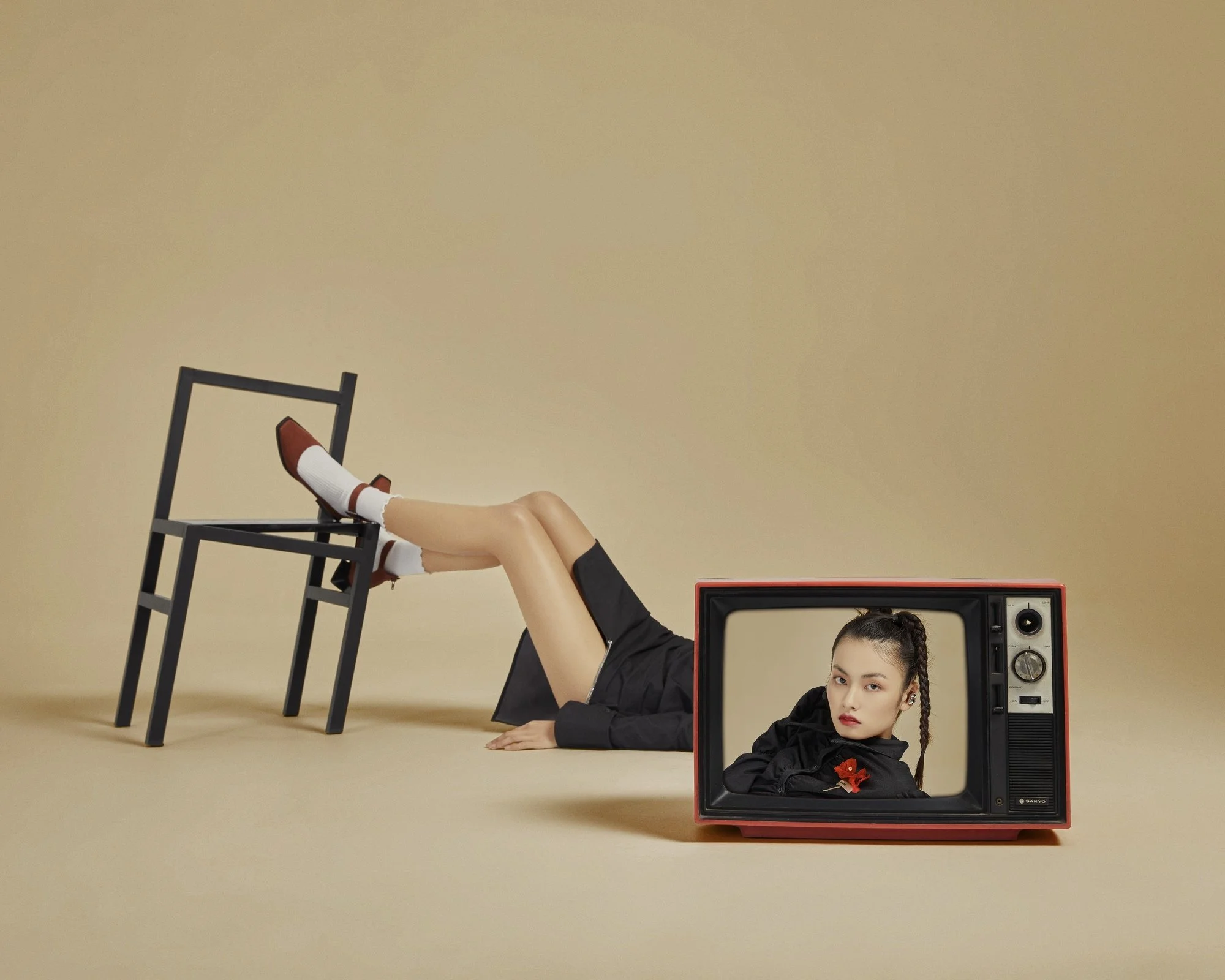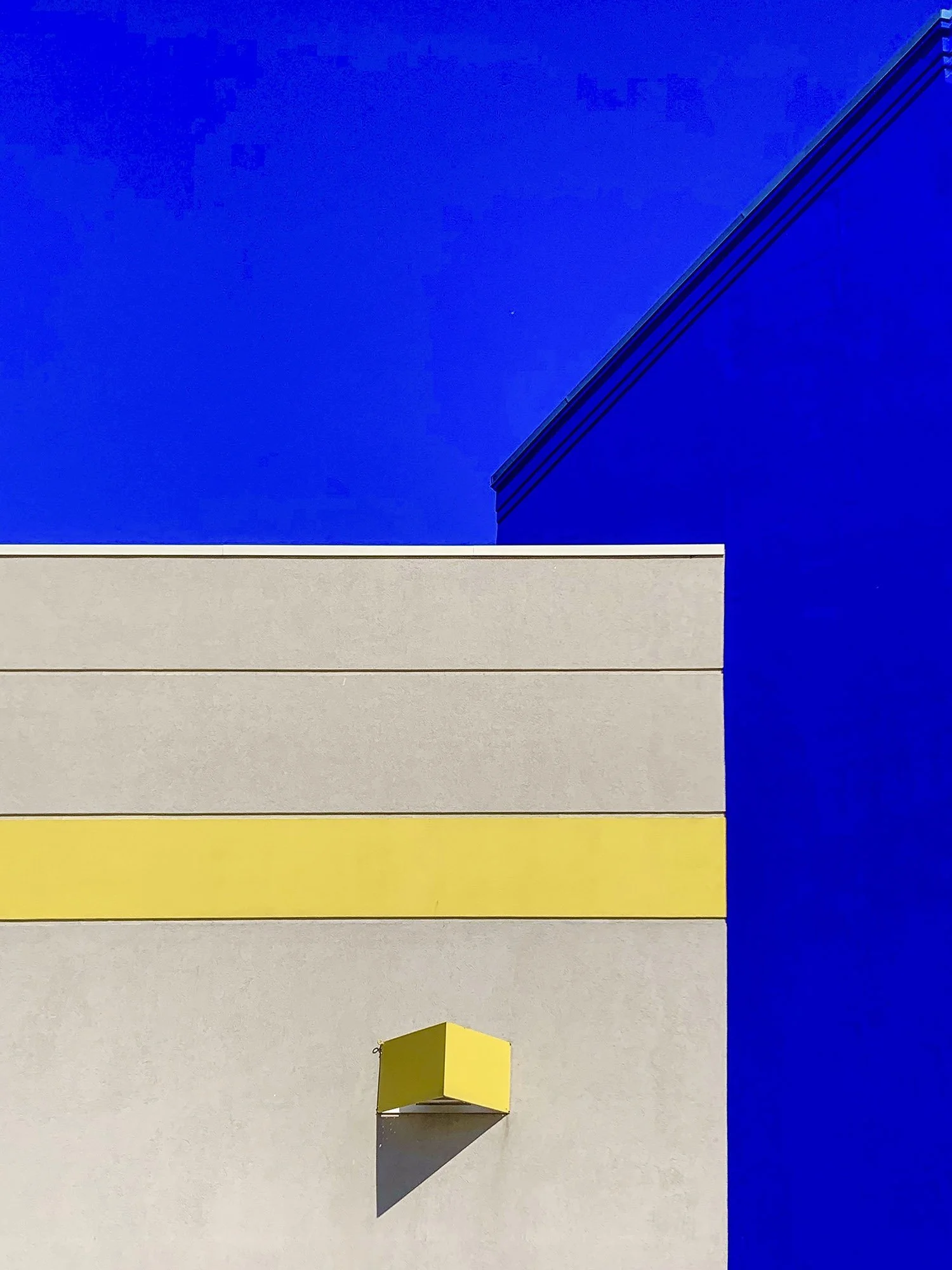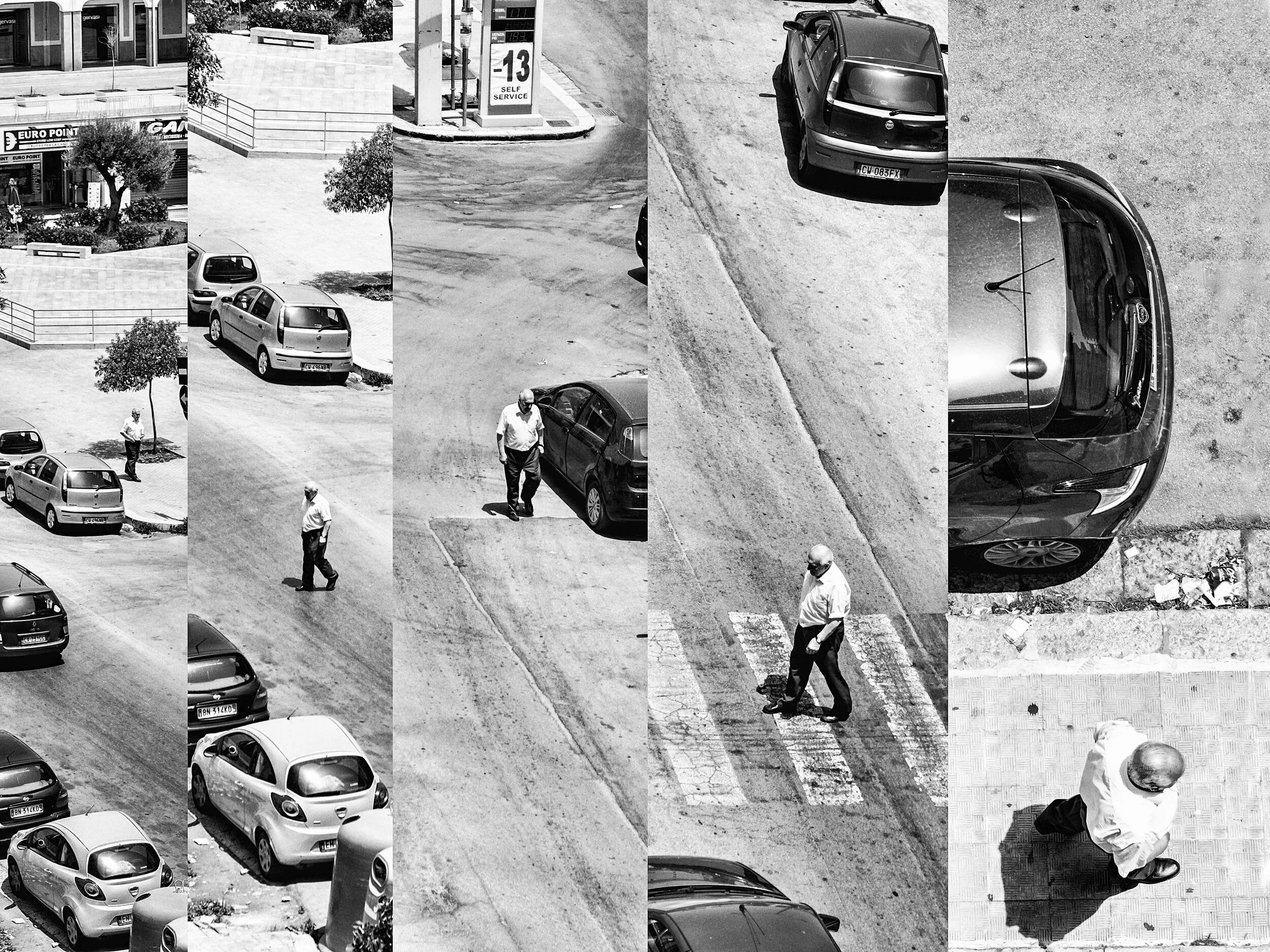10 Questions with Patrícia Abreu
Al-Tiba9 Art Magazine ISSUE13 | Featured Artist
Patrícia Abreu is a Brazilian Visual Artist, who graduated in Design, in 1991, at PUC-RJ, Brazil. She worked for 15 years in Artistic Production and Costume Design for Audiovisual Dramaturgy. After this period, she worked as a freelancer in various areas of Visual Arts.
Currently, she rescues the practice of Photography as a conceptual, formal, and artistic exercise. With her editorial expertise focused on Graphic Design, she uses her image editing skills to perform digital interferences in her Macro Photographs, aiming to expand her artistic expressiveness, thus building her own Library of Botanical Images.
Themes about Time, Memory, and the Natural World are a constant presence in her work. She has always been interested in the mysteries of Nature's life, which is covered beyond the visible surfaces that envelopes what we see and blur what we imagine.
Since 2021, she has participated in various Group Exhibitions at Collect Art, ARTDOC Magazine, Envision Arts, LoosenArt Gallery, Galeria EIXO, and others.
Patrícia Abreu - Portrait
ARTIST STATEMENT
The construction of images is captured photographically as instruments of visualization of imprecise worlds to our naked eyes, both for the light that passes through the lenses that deform and magnify and for the unconventional investigation of the chosen subject. All the imprecise questions and subtle answers faced on this journey leave her more than fascinated by Contemporary Photography and the future of image making.
She enjoys applying her editing skills to digital interference in her photographic images as much as she enjoys using Macro Photography as an intervention-free technique in post-production, always with the aim of expanding her artistic expression in the visual field of image creation.
Seeing abstractions through her focused Macro Lens is a delightful way to build images. Let the light trace the lines to follow, direct the gaze and reveal the sensations as we see, allowing the mystery of shadows, colors, contours, and visible shapes of the new image to tell us its path.
Patrícia Abreu - Portrait (Milky Way Series, 2021)
Echoing Humanity | Project Statement
In a city raised by discoveries, Time makes itself present in derelict machines.
Sometimes, the discoveries open new paths. Other times they lead you astray, causing the risk of immersing yourself in a discarded world.
This series of photographs was casually taken when passing through Cisco, a ghost town in Utah, USA, in January 2019.
These images talk about transience. When facing ephemerality, we see our uncertain future. Years of prosperity materialized in an accumulation of dust. When Time stands still, we can see not only our Past but also our Future. Then, the desert dirt turned into snow dust, bringing those dystopian images to this vast empty landscape.
Facing abandonment made the artist think that discoveries bring changes and that changes carry possible futures. In this lost place, these ancient founds make her see Time in silence. Realizing how discoveries can change our environment, turning our horizons into past memories.
Echoing Humanity (White Crane), photography © Patrícia Abreu
Get your limited edition copy now
INTERVIEW
First, tell us a little about your background and studies. What kind of education or training helped you develop your approach to art and photography?
I got my degree in Graphic Design in 1991, at PUC-RJ, in Rio de Janeiro, Brazil, when I was introduced to analogue photography and traditional darkroom processes. This experience was fundamental because it awakened the desire to apprehend images that I carry with me to this day.
I think that this background on traditional methods of printmaking and constructing image design made me feel comfortable with the new approaches that came about with the advent of Digital Photography, which I have been practicing since its early days. When I did artistic research for audiovisual productions, I also used Photography to create my visual memories archive. Nowadays, I have been accumulating studies correlating Photography with Literature, Philosophy, Art, and New Technologies.
You started working in art direction for audiovisual dramaturgy and just recently approached photography. Why did you decide to follow this path?
As I said earlier, I've carried Photography with me since 1989, when I was introduced to it in college. Since then, I have used photography in different moments and approaches throughout my personal and professional life. In 2018, I realized this urgency to express myself through images. Images were taken from within me, this entire visual archive that I've been building over the years by reading stories and observing my surroundings. Since then, I decided to dedicate myself to this narrative construction of images formed through light and lenses. I feel that my signature was there, but sometimes we have to reinvent ourselves throughout the cycle of life. I continue like this, making new images, revisiting my archives, and interfering with my memories.
Echoing Humanity (Entrelaços), photography © Patrícia Abreu
How much do your Art Direction research background and your work in the entertainment industry help or influence your photographic work?
It is interesting to point out that the practice of research for Art Direction in audiovisual works for Cinema or Television drama always begins with the interpretation of a text. The author's script is our first working material. You have to prospect your images through words. For me, I always felt the need to mentally build imagery scenes through these texts, visualizing all the details of the theme, settings, characters, and scenes as a believable reality. I tend to think that this constant imaginative exercise is already present in my photographic work. A kind of need to take pictures and build narratives, even conceptual ones, but in a credible way. Feeding my curiosity by using it to cultivate detailed visual narratives.
Let's talk about your creative process. How do you decide what to shoot? And what aspect of your work do you pay particular attention to?
My practice is a mix of intuition and investigation. I am a person abducted by details. Sometimes I find them on my horizon; other times, I am forced to look for them through minimal scales, such as in my work in Macro Photography. I am always moved to find patterns and textures, microcosms of unnoticed signs. This attentive look reveals to me new configurations, where shapes and colors lead the narrative of stories not yet revealed.
Eventually, I may feel the need to interfere with the original images, adding, through Digital Art, new layers of colors and interpretations, creating Digital Photomontages that can carry multiple meanings.
Echoing Humanity (On lookes), photography © Patrícia Abreu
Echoing Humanity (Stay Out), photography © Patrícia Abreu
You use photography in a conceptual way as a means to convey messages visually. But what are those messages you want to communicate to the viewers?
Photography is a form of self-expression that allows me to see, through the lens, a borderless world that lies within us. As I am an inquisitive person, I like asking questions so much that I look for answers. Thus, every subject, from my point of view of interest, must carry some doubt in its layers of concepts. But what I most want to touch on is the perception of layered meanings. Does it talk about how we can see things that aren't really visible on the surface? How to face the truth in a world of multiple realities? And how can we trust images that are constructed through intended photographs? So I try to draw the public's attention to observe the unexpected manifested in an image. Some places, some objects, some things, and some moods could capture the feelings held by the observers. And the Themes I most like to work on are the visibility and invisibility of Time and the formation of our Memories.
"Mysteries are all around us, even in the most familiar things, just waiting to be noticed." – Wynn Bullock
Let's talk about your "Echoing Humanity" series. How did you come up with the idea for this series?
In January 2019, I took my family on a road trip along the West coast of the USA, towards Moab, Utah, with the idea of visiting the great National Parks of this State - Canyonlands and Arches National Parks. I always prefer to take peripheral routes that allow the unexpected to happen, so we decided to take the Highway 128 Scenic Byway instead of the Interstate. From my map research, I knew I would likely pass near a "ghost town" on this path. What I didn't know was what would be achieved on this special day, filled with pure brilliant light, decorated by the snow that had fallen in the desert the night before. It changed everything. It brings an atmosphere of hope to the captured images. This special moment was invaded by contradictory feelings of peace and anguish. Peace for my moment of connection with the isolated place and anguish to face the reality of abandonment, a very relevant environmental issue these days.
Echoing Humanity (Solitude), photography © Patrícia Abreu
The series depicts Cisco, a ghost town in Utah, USA, and reflects on the passing of time and how it influences the world around us. Can photography, which crystallizes time in an image, be an antidote to ephemerality?
I totally agree with that. For me, Photography is a way of apprehending slippery times. Time, which is always changing by some sort of artifice, could be confined through a captured image. Opposing past actions to ephemerality. It's definitely a way to catch moments in the flow. And that's the magic.
You also mention how, when time stops, you can perceive the past, the present, and the future at the same time. What did you see in Cisco, and how did it change your perception of the present and the future?
Cisco City has had some ups and downs over the decades. It was created in the 1880s as a railroad service station and has managed to survive the modernization and socio-economic changes of the 20th century several times. Still, it couldn't escape its fate, and the inevitable decline began to occur in the 1970s, when Interstate 70 was built a few miles to the north. Today, without running water or current residents, the old vehicles left behind mark the human presence in a remote landscape frozen in time. It may sound like a dystopian future, but it's our present. Sometimes progress opens up new paths, other times it leads you astray, causing the risk of immersing yourself in a discarded world. Filled with the silent solitude that inhabits a snowy white desert.
Facing abandonment made me think that progress brings changes, and these changes carry the Future. The 150 years of prosperity materialized in an accumulation of dust. In this lost place, these ancient finds make me see Time in silence. Realizing how changes in our environment can transform our horizons into past memories.
Echoing Humanity (Sitting Waiting Wishing), photography © Patrícia Abreu
Echoing Humanity (Time Bites), photography © Patrícia Abreu
Talking about the future, what are your plans for the future? Do you have any new series or projects you are currently developing?
My newest work focused on Macro Photography is an ongoing series called "Time Capsules". In it, I try to capture impressions of movement in a state of inertia through the itinerant lights that cross familiar objects made of old hand-blown crystal. A personal approach to looking at Time, Space, and Memories through the lens of photographic practice.
I'm also involved in a new project called "Unreal Truths", where I worked with two different interpretations of the same capture, always taken with my iPhone 13 Pro Max. Making a correlation with the algorithmic way of building digital files. Simultaneous realities are expressed by digital photomontages that incorporate two different interpretations of the same recorded image. One is an image translated in Photoshop and the other is a glitched image interpreted by an outdated software. The two files mixed together will form a single visual message. "Unreal Truths" is an ongoing photographic project, built through my personal interpretation of the unexpected results obtained by the interaction between technological interfaces, forming a Collection of Digital Photomontages that convey abstract feelings through their corrupted forms.
Finally, are there any shows, galleries, or publications where our readers can find your work?
In addition to the featured pages in the newest Al-Tiba9 Magazine, Issue 13, I have 2 Macro Photographs presented this April at the RGB SKY Exhibition - at MADS Art Gallery - website: www.madsgallery.art . I am also participating in two Art Group Exhibitions here in Brazil, one of which can be accessed through the Gallery's website - EIXO Reserva Gallery: Image and Territory. More of my recent work can be found on my website: www.patriciaabreu.com on the News page: News - Patrícia Abreu.



























